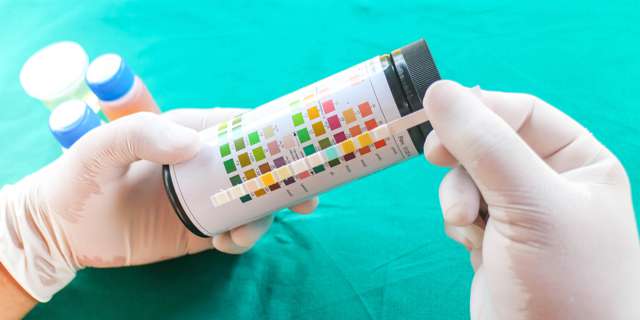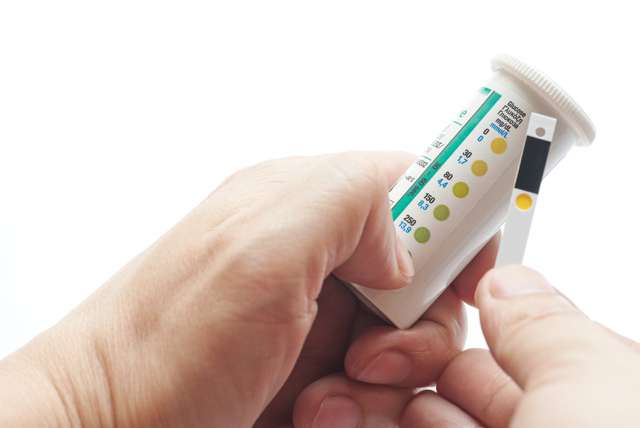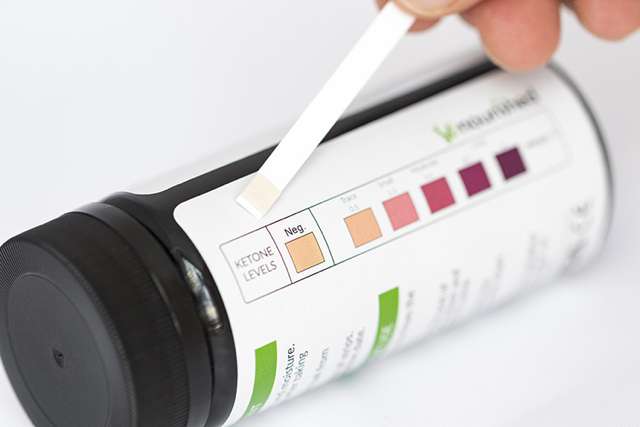
Medical test strips provide users with important information about their health. Image Source: Shutterstock user memorisz
Medical test strips must be as accurate as possible to be effective, as even subtle color inconsistencies between the strip and the color-coded test package could have negative consequences for the person using the strip. For example, if someone who has diabetes uses a urinalysis test strip to monitor the condition, a disagreement between the strip’s color and the diagnosis code could lead to an inaccurate assessment of blood glucose levels, potentially compromising patient health.
For this reason, medical test strip manufacturers need to have a reliable color quality control protocol in place when they create their products. Spectrophotometric instruments allow manufacturers to ensure that their test strips and diagnosis codes match as perfectly as possible, making it easy for customers to see where they fall on the color scale.
Why Color Accuracy Matters in Medical Test Strips
While many healthcare professionals use medical test strips to diagnose conditions in patients, self-administered over-the-counter medical test strips are becoming more popular. In fact, at-home test strip sales increased by more than 45 percent between 2010 and 2012.1 The blood glucose test strip market, in particular, is consistently growing in value and is expected to be worth nearly $13 billion worldwide by 2021.2
However, despite the popularity of at-home test strips, there are still some risks associated with using test strips at home. In a medical office, doctors have more tools at their disposal to diagnose and monitor health conditions such as diabetes. As such, if a test strip appears muddled in color or inaccurate, a medical professional can simply run other tests to reach a correct diagnosis. At home, however, test strip users rely entirely on the strip’s color accuracy to provide them with vital information about their health. Unless they make a follow-up appointment with their doctors to confirm whether the test strip was accurate, at-home test strip users have to take the test strip’s color at face value.
The challenge that manufacturers face is that test strip colors aren’t always as clear as they should be. For example, one study found that patients frequently struggled to correctly interpret the color of their blood glucose test strips, especially when those patients had a visual impairment or viewed the strips under poor lighting conditions. 3 Moreover, even if test strip users correctly interpreted the color of the test strip, if this color didn’t perfectly match the sample colors provided by the test strip manufacturer, users couldn’t reach a reliable diagnosis.
This is a potentially dangerous problem for test strip users and manufacturers alike. A user might have a high level of glucose in the blood, but if the test strip’s color is unclear or it doesn’t match the colors provided by the manufacturer, the user might not be sure of a high glucose diagnosis. As a result, the user might not take the necessary steps to bring glucose levels down to a normal level.4 To solve this problem, test strip manufacturers must refine their color quality control protocols to ensure that every test strip provides, clear, accurate results.

Correct coloration is essential to ensure accurate results in medical test strips. Image Source: Shutterstock user Ji Zhou



